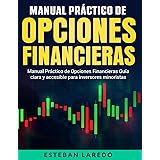Navigating the dynamic landscape of US crypto exchanges can often feel like charting an uncharted ocean. With myriad platforms vying for attention, distinguishing between those that offer robust features, stringent security, and, crucially, competitive fees, becomes paramount. While the accompanying video provides an excellent overview of the top contenders, delving deeper into the intricacies of each platform’s fee structure, regulatory compliance, and unique offerings is essential for making an informed decision.
Imagine, for a moment, meticulously planning a significant cryptocurrency trade, only to discover a substantial portion of your potential profit eroded by unforeseen fees. This unfortunate scenario underscores the importance of a comprehensive understanding of exchange operations. This article expands upon the insights shared in the video, providing a more granular examination of the leading US-based crypto exchanges, tailored for the discerning trader seeking optimal performance and cost efficiency.
Understanding Fee Structures: Beyond the Advertised Rates
When selecting a cryptocurrency exchange, the fee structure is arguably one of the most critical considerations. However, the term “low fees” often requires further dissection. As highlighted in the video, various fee models exist, each with distinct implications for different trading styles and volumes.
Maker-Taker Fees: A Nuanced Approach to Liquidity
Many prominent exchanges, including Coinbase and Kraken, utilize a maker-taker fee model. This system is designed to incentivize liquidity on the platform. A “maker” is a trader who places an order that is not immediately matched, thus adding liquidity to the order book (e.g., a limit order). Consequently, makers typically pay lower fees, or in some cases, even receive rebates.
Conversely, a “taker” is a trader whose order is matched immediately, removing liquidity from the order book (e.g., a market order). Takers generally incur higher fees. For instance, Coinbase’s fee schedule, as detailed in the video, shows a range from 0.40% (maker) to 0.60% (taker) for low-volume trades (below $10,000 monthly). This differential can significantly impact profitability, especially for high-frequency traders. Understanding this distinction allows traders to strategically place limit orders near market prices to qualify for the lower maker fees, optimizing their cost basis.
Spread Fees: The Opaque Cost of Convenience
Platforms like Robinhood, as discussed, often employ a spread-based fee model. Instead of an explicit commission per trade, the exchange profits by offering a slightly higher purchase price and a slightly lower selling price compared to the prevailing market rate. While this model may appear “commission-free,” the hidden cost lies within this price differential. Calculating the exact impact of spread fees can be challenging, as it varies based on market volatility and the specific asset being traded.
For infrequent traders or those employing a buy-and-hold strategy, these spread fees might seem negligible. Nevertheless, for active traders or those executing large transactions, these seemingly small discrepancies can accumulate rapidly, potentially negating otherwise favorable market movements. It is therefore crucial for users of such platforms to remain cognizant of the actual prices they are receiving for their assets, contrasting them with real-time market data from other exchanges.
Navigating the US Regulatory Environment and Security Protocols
The regulatory landscape for cryptocurrency exchanges in the United States is notoriously complex, characterized by federal and state-level oversight. This environment directly impacts an exchange’s ability to operate in certain states and the range of services it can offer. Furthermore, robust security measures are non-negotiable in the digital asset space.
State-Specific Restrictions and Licensing Challenges
The video points out that certain exchanges like Kraken and Crypto.com are unavailable in specific US states, notably New York. This is largely due to New York’s stringent BitLicense regulation, which requires crypto companies to obtain a special license to operate within the state. Obtaining and maintaining such licenses is an expensive and time-consuming endeavor, leading some platforms to withdraw from these markets.
Consequently, traders residing in states like New York, Washington, or Maine must carefully verify an exchange’s availability before attempting to open an account. Coinbase and Gemini, both available in every US state, demonstrate a higher level of regulatory compliance, offering a broader reach for users across the nation. This universal availability is a significant competitive advantage, reflecting substantial investment in legal and compliance infrastructure.
Security as a Cornerstone: Protecting Digital Assets
The security of funds is paramount. Exchanges like Coinbase and Gemini are renowned for their industry-leading security protocols. This includes a multi-layered approach encompassing cold storage for the vast majority of customer assets, robust two-factor authentication (2FA), advanced encryption, and often, insurance policies against certain types of cyber breaches. For experienced traders, the peace of mind offered by such measures is invaluable, mitigating the risk of asset loss due to external threats or internal vulnerabilities.
Moreover, the video highlights Coinbase’s status as a publicly traded company. This public listing subjects the exchange to rigorous financial reporting and auditing standards, adding an extra layer of transparency and accountability that further reinforces trust among its user base. When substantial capital is involved, such institutional backing and adherence to public market scrutiny become critical factors in platform selection.
Deep Dive into Top US Crypto Exchanges and Their Specialties
Based on the video’s analysis and expanded insights, let’s explore the leading US crypto exchanges, detailing their strengths and specific use cases for various trader profiles.
Coinbase: The Industry Benchmark for US Users
Consistently lauded as a top-tier platform, Coinbase earns its 9.8 rating due to its comprehensive ecosystem. With 286 tradable cryptocurrencies and broad support for fiat funding methods, including Apple Pay, debit card, PayPal, and bank transfers, convenience is a significant draw. While its base maker-taker fees (0.40%-0.60% for low volume) might be slightly higher than some competitors for smaller trades, the sheer accessibility, regulatory adherence, and institutional-grade security often justify this premium. Furthermore, Coinbase’s advanced section now offers derivatives trading, providing sophisticated tools for experienced traders seeking exposure to futures markets. Its long operational history and public company status cultivate unparalleled trust in the volatile crypto market.
Kraken: Balancing Cost-Efficiency with Robust Features
Kraken, rated at 9.4, stands out for offering some of the lowest trading fees, particularly for higher volumes, matching Coinbase’s rates in these tiers. Crucially, for low-volume traders, its fees can be more competitive than Coinbase’s highest tier, potentially saving a few cents on smaller transactions. With over 400 tradable cryptocurrencies, Kraken surpasses Coinbase in terms of altcoin selection, appealing to those looking beyond the major market cap assets. The exchange also provides advanced trading options like futures and margin trading, which, while now available on Coinbase’s advanced interface, were historically a key differentiator for Kraken. Its proven track record for secure and swift withdrawals—demonstrated by bank deposits within 48 hours for significant amounts—underscores its reliability for users with larger portfolios. However, its unavailability in New York, Washington, and Maine remains a notable limitation.
Robinhood: A Hybrid Approach for Diversified Portfolios
Robinhood, with a 9.1 rating, occupies a unique niche, primarily serving as an all-in-one platform for both stocks and cryptocurrencies. Its appeal lies in its extremely user-friendly interface, making it an excellent entry point for those accustomed to traditional financial apps. The video highlights its evolving crypto offerings, now featuring 26 tradable coins, a significant increase, and crucially, the ability to transfer coins off-platform to personal custodial wallets. This feature was a game-changer, addressing a major criticism and elevating Robinhood’s standing. While its fee structure relies on variable spreads, which can be less transparent for active traders, it poses minimal concern for long-term holders. For individuals managing both traditional investments and crypto within a single, streamlined application, Robinhood presents a compelling, convenient solution.
Gemini: A Fortress of Security for Discerning Traders
Rated 9.0, Gemini is championed for its exceptional security and appeal to very experienced traders. Its fee structure is remarkably competitive, offering the lowest low-end volume fees among the top exchanges (0.20%-0.40% for makers/takers). Founded by the Winklevoss twins, Gemini has cultivated a reputation for stringent regulatory compliance and robust security protocols, making it available in every US state, including New York. This broad accessibility is a testament to its commitment to operating within regulatory frameworks. Nevertheless, its primary drawback is a comparatively limited selection of cryptocurrencies, currently ranging from 80 to 90 coins. While this provides access to major assets, it might deter traders seeking exposure to a vast array of niche altcoins. For those prioritizing security and regulatory compliance above extensive coin diversity, Gemini remains an excellent choice.
Crypto.com: Rewards, Reach, and Regional Limitations
Crypto.com, an 8.6-rated Singaporean-based exchange available in the US, differentiates itself through an extensive reward system, particularly for holders of its native CRO token. With over 350 tradable coins, it offers a broad selection, comparable to Kraken. Its fee structure, at a flat 0.40%, is competitive with Coinbase’s lower maker fees. The platform boasts unique features like crypto-backed credit cards and attractive staking opportunities for CRO. However, the video points out that its sign-up bonuses often pale in comparison to Coinbase’s generous offers. Furthermore, similar to Kraken, it is not available in New York and imposes transaction fees for fiat withdrawals, which can be a deterrent. While Crypto.com provides a compelling ecosystem for active CRO users, alternative exchanges might offer better value for general trading, particularly for those in restricted states.
Specialized Platforms and Niche Solutions for Unique Trading Needs
Beyond the primary contenders, several platforms cater to specific trading preferences or offer distinct advantages worth considering.
Moonpay: The Premium for Payment Flexibility
Moonpay offers unparalleled convenience, particularly for those wishing to purchase cryptocurrencies using credit cards or Venmo. This flexibility, however, comes at a premium. With fees ranging from 1% for bank transfers to 4.5% for credit card transactions and 3.4% for PayPal, Moonpay’s costs are significantly higher than traditional exchanges. Imagine needing to quickly acquire crypto for an urgent transaction or to capitalize on a fleeting market opportunity; Moonpay allows for instant purchases without waiting for bank transfers to clear. While not ideal for regular, high-volume trading due to its elevated fees, its ease of use and diverse payment options make it a viable choice for sporadic, convenience-driven acquisitions or as a quick fiat on-ramp when other options are unavailable.
Binance.US: Rebuilding Trust, Focusing on Bitcoin
Binance.US has experienced a tumultuous journey, having faced significant regulatory challenges that temporarily restricted fiat on/off-ramps for US users. While the video notes these issues are now largely resolved, a degree of caution is still warranted. Presently, Binance.US offers free Bitcoin trades, an extremely attractive proposition for high-volume Bitcoin traders. Consider a scenario where an individual needs to sell $50,000 worth of Bitcoin; on an exchange with a 0.4% fee, this would incur a $200 charge. On Binance.US, such a trade would cost $0, representing significant savings. Additionally, users paying fees with BNB coin receive a 5% discount. Despite its competitive fees for Bitcoin and BNB holders, its past regulatory issues might lead some to prefer more established platforms like Coinbase or Kraken for diversified trading.
Exploring Alternatives: Decentralized Exchanges (DEXs) and Legacy Platforms
The Case Against KuCoin for US Fiat Users
For US users, KuCoin has become increasingly challenging to use for fiat transactions. The inability to directly deposit or withdraw US dollars necessitates routing funds through other exchanges, creating an inefficient and costly process. For accessing extremely small or newly launched altcoins, decentralized exchanges (DEXs) like Uniswap (for Ethereum/Base) or Jupiter (for Solana) offer a more direct and often more efficient alternative. These platforms typically involve higher gas fees but provide unparalleled access to a vast array of niche tokens without the centralized exchange’s fiat on-ramp complications for US residents.
Why eToro Falls Short for Advanced US Traders
eToro, while a recognizable name, generally falls short for experienced US crypto traders. It typically features higher fees, a more limited selection of cryptocurrencies, and is restricted in several US states. Moreover, the platform often lacks the advanced trading features and crypto-to-crypto trading capabilities expected by sophisticated users. Unless one is a complete novice seeking an extremely simplified entry into crypto, other exchanges offer significantly more robust functionality and better value for money.







